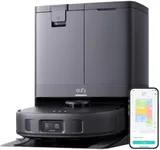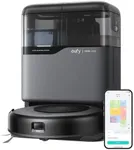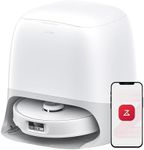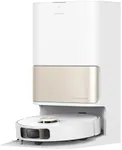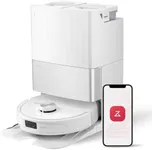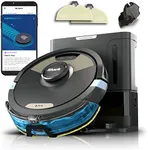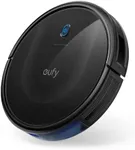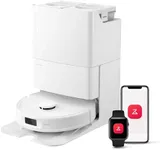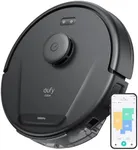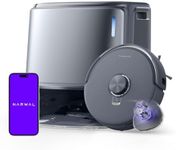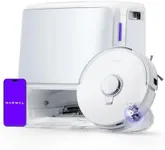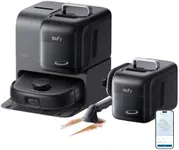Buying Guide for the Best Robot Vacuum With Mops
Choosing a robot vacuum with a mop can make cleaning your floors much easier and more convenient. These devices combine vacuuming and mopping functions, saving you time and effort. To find the best fit for your home, it's important to understand the main features and how they relate to your specific needs, such as the size of your living space, the types of floors you have, and how much automation you want. By focusing on the key specifications, you can make a more informed decision and select a robot that will keep your floors clean with minimal hassle.Suction PowerSuction power refers to how strongly the robot vacuum can pull in dirt and debris from your floors. This is important because higher suction power means better cleaning, especially on carpets or when picking up pet hair. Suction power is usually measured in Pascals (Pa). Lower suction (under 1500 Pa) is suitable for hard floors and light cleaning, medium suction (1500-2500 Pa) works well for mixed surfaces, and high suction (over 2500 Pa) is best for thick carpets or homes with pets. If you have mostly hard floors, you can choose a model with lower suction, but for carpets or lots of pet hair, go for higher suction.
Mopping FunctionalityThe mopping feature allows the robot to wipe your floors with a damp cloth or pad, sometimes with a water tank. Some robots only drag a wet pad, while others can control water flow or even scrub. Basic mopping is fine for light dust and maintenance, but if you want to tackle sticky stains or have a lot of tile or hardwood, look for adjustable water flow or scrubbing action. Consider your floor type and how much mopping you need—if you have mostly carpets, mopping may be less important, but for tile or hardwood, a better mopping system is useful.
Navigation and MappingNavigation and mapping determine how the robot moves around your home and avoids obstacles. Basic models use random movement, which can miss spots or take longer, while advanced models use sensors or lasers to map your rooms and clean in straight lines. If you have a simple, open space, basic navigation may be enough. For larger or more complex homes, or if you want the robot to clean specific rooms, look for mapping features and smart navigation. This ensures more thorough and efficient cleaning.
Battery Life and ChargingBattery life affects how long the robot can clean before needing to recharge. Shorter battery life (under 90 minutes) is fine for small apartments, while longer battery life (over 120 minutes) is better for larger homes. Some robots can return to their charging dock and resume cleaning automatically, which is helpful for big spaces. Think about the size of your home and how often you want the robot to run—choose a battery life that matches your cleaning needs.
Dustbin and Water Tank CapacityThe size of the dustbin and water tank determines how much dirt and water the robot can hold before you need to empty or refill it. Smaller capacities mean more frequent maintenance, while larger ones allow for longer, uninterrupted cleaning. If you have a big house or pets that shed a lot, look for larger bins and tanks. For smaller spaces or less frequent cleaning, a smaller capacity may be sufficient.
App and Smart FeaturesMany robot vacuums come with apps or smart home integration, allowing you to schedule cleanings, set no-go zones, or control the robot remotely. Some also work with voice assistants. If you like convenience and want to customize your cleaning routines, look for models with robust app features. If you prefer simplicity, a basic remote control or button-operated model may be enough.
Floor Type CompatibilityNot all robot vacuums and mops are suitable for every floor type. Some are better for hard floors, while others can handle carpets and rugs. If your home has a mix of surfaces, make sure the robot can transition between them and adjust its cleaning mode. For mostly hard floors, focus on mopping performance; for carpets, prioritize suction and brush design.
